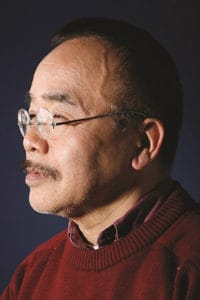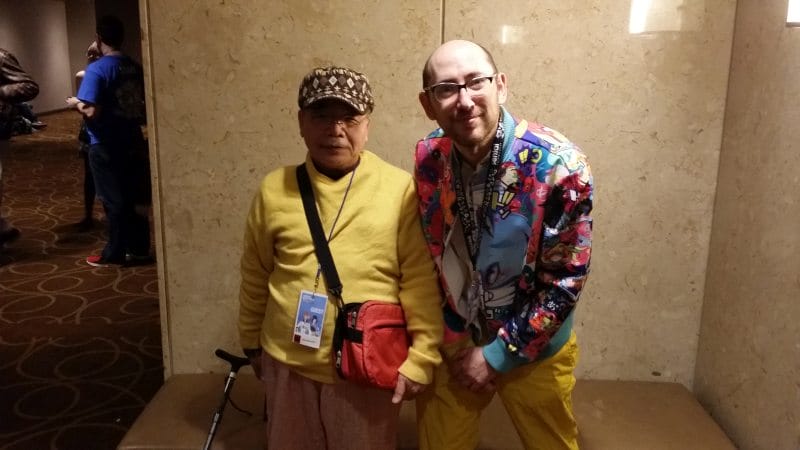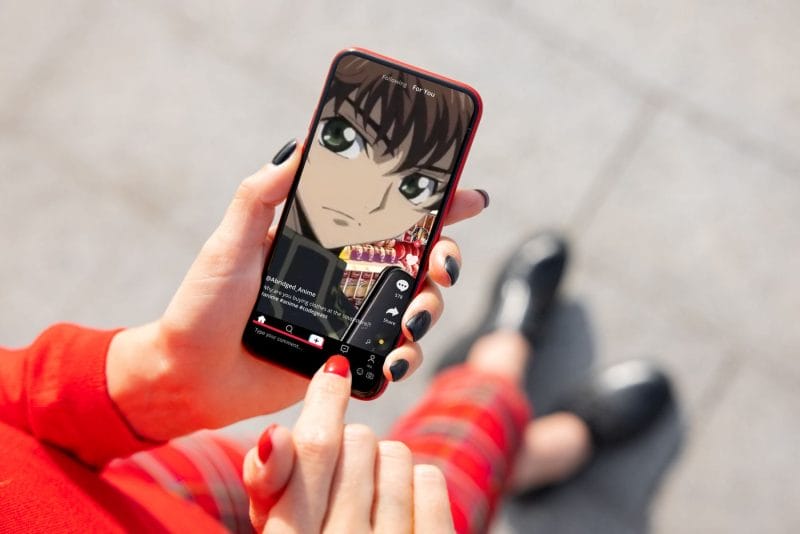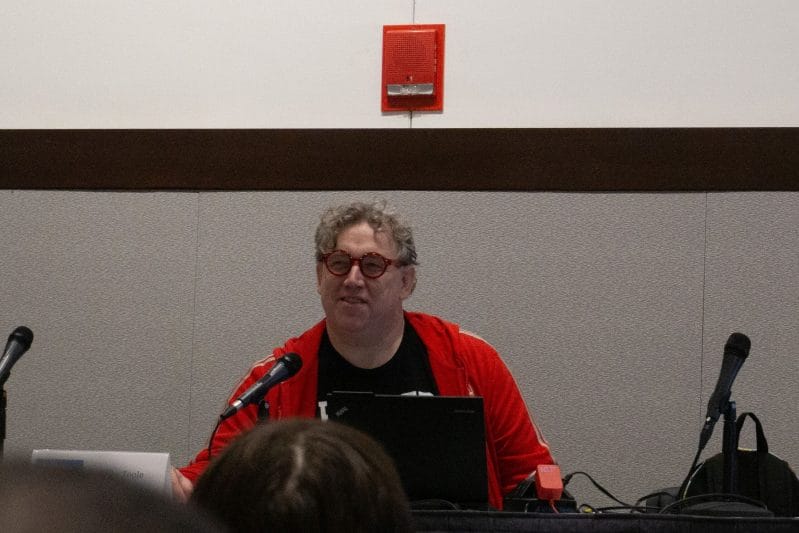Masao Maruyama has no interest in talking about Masao Maruyama. We are halfway into his Q & A session and he’s answering the first question, which was “How did you get into the animation industry?”
“My whole existence is because of [Osamu] Tezuka-san.” -Masao Maruyama
 When Maruyama first met Osamu Tezuka, Tezuka was working at Toei Animation. Shortly after that Tezuka decided that he wanted more control and founded Mushi Production (Mushi Pro). Maruyama was one of his first hires.
When Maruyama first met Osamu Tezuka, Tezuka was working at Toei Animation. Shortly after that Tezuka decided that he wanted more control and founded Mushi Production (Mushi Pro). Maruyama was one of his first hires.
Here, Maruyama stopped for a moment, and spoke with the translator. After they conversed, Maruyama said that, at the time, “we could only produce one release every three years. That was the best we could do.” Tezuka had become frustrated with that, and worked very hard to find a way to do better. Astro Boy was his solution.
It was unique. Tezuka managed to create the feeling of movement with as few cels as possible. He designed storyboards that minimized the work required from the animators, and was able to produce the animation much faster (and cheaper). Animated films at the time were heavily influenced by Disney, which led to lavishly illustrated movement. Tezuka had been inspired by Disney, but he foresaw that the current model was not going to work.
Tezuka used his medical knowledge (he had a doctorate in medicine from Nara Medical University) to create his new style. He understood that our eyes and brains used patterns to take shortcuts. Not only was he able to reuse cels, he could slightly alter them and let the audience fill in the rest as they watched. It was a brilliant gambit that changed the industry going forward. (Speed Racer may have taken this a little too far, but that wasn’t Tezuka’s fault.)
 Maruyama was in his early 20s when he started working for Tezuka. He described it as a pure coincidence, as he wasn’t that interested in anime. He laughed and said “The working conditions were not great. We were all learning on the fly and I was really lucky. He influenced everything.”
Maruyama was in his early 20s when he started working for Tezuka. He described it as a pure coincidence, as he wasn’t that interested in anime. He laughed and said “The working conditions were not great. We were all learning on the fly and I was really lucky. He influenced everything.”
In 1972 Maruyama was part of a group of animators who left Mushi Pro to found Madhouse. Mushi Pro had been having severe financial difficulties, and declared bankruptcy in 1973. Maruyama reminisced that he had a lot of freedom at Madhouse in the early days. He felt Mushi Pro had calcified and limited what people could do. However, in time Madhouse grew very large and very corporate. Maruyama felt his freedom diminish, and in 2011 he founded MAPPA. His reasoning was that “After thirty-plus years a lack of freedom was not to my taste. I wanted the freedom to work on what I wanted, with who I wanted. Now that MAPPA is getting big, I am not sure what to do!”
He said he felt very gratified by his reception in Boston. The overseas success of Trigun and Ninja Scroll led him to suggest that perhaps foreigners have better taste in anime, due to having fewer preconceptions.
Someone made the mistake of asking Maruyama what his plans are now that he is getting older. He corrected them “I’m young! In order to keep producing anime, you must stay curious. I try to get younger one year every year.”
After the session ended, Maruyama pulled me aside and requested a photo. He loved this jacket:

It was inspired by the work of artist 3 Eyes Takahashi (Hiroyuki Takahashi), and produced by fashion designer Galaxxxy. Hopefully it will be restocked soon.












